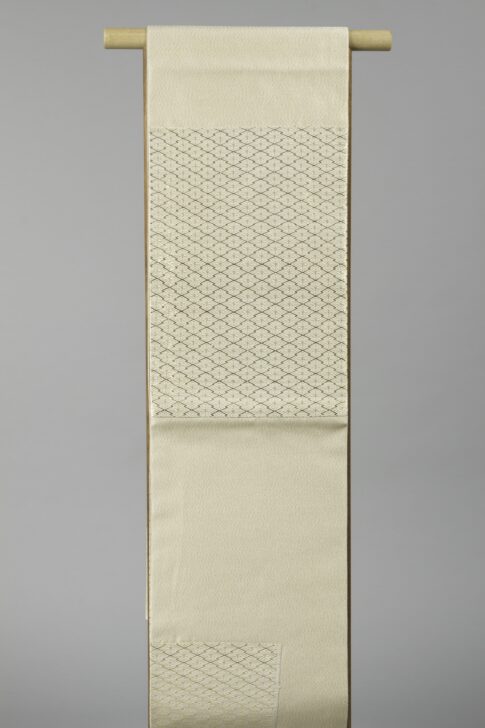Obi
Japanese

Description
Subject Matter:
This is a Nishijin and fukuro obi in otaiko gara.
Fukuro Obi is double-layered single sided obi in which two separately woven surfaces and back pieces of cloth are stitched together. This type of obi is typically only worn at weddings or other formal occasions.
Nishijin-ori textiles were developed in the Nishijin area of Kyoto city and has dominated the production of high-quality woven textiles since the fifteenth century. The production of Nishijin textiles is very complex and is specialized in five main areas—designing and creating patterns, producing silk threads, producing tools (including weaving machines), weaving, and final sewing—each executed in a different workshop.
Gara refers to the orientation, arrangement, and surface area of the patterns and pertains to a specific trend and obi tying style.
The patterning in the Otaiko gara type is minimal. A few concentrated spots of patterned motif lie on the obi while the rest is left blank. This style was invented during the Edo period (1615-1868) by the female entertainers in Fukugawa, an entertainment district in present-day Tokyo.
Physical Description:
Off-white beige and gold speckled fukuro (single-sided) obi with gold side threads with interwoven gold matsukawa bishi (interlocking geometric pine river) motif patterning.
Usage Rights:
If you are interested in using an image for a publication, please visit https://umma.umich.edu/request-image/ for more information and to fill out the online Image Rights and Reproductions Request Form.